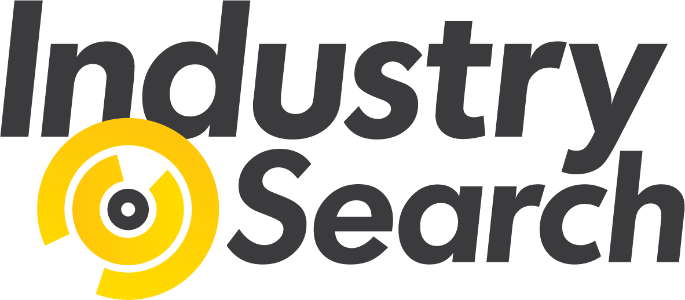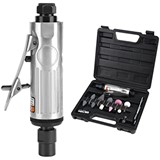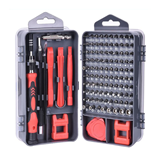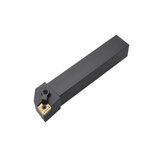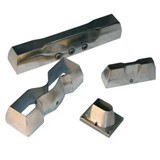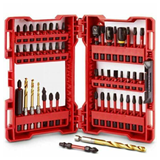Key Takeaways:
- Move beyond spreadsheets. Manual scheduling with Excel or whiteboards drives payroll errors, compliance breaches and lost productivity.
- Prioritise a mobile-first tool. Field crews need an intuitive app to ensure adoption and smooth operations across multiple sites.
- Compliance tracking is essential. The system must actively monitor WHS tickets, licences and inductions to prevent scheduling non-compliant workers.
- Automated award interpretation. Mixed crews under complex Australian awards require a tool that calculates pay accurately and integrates with payroll.
- Focus on your biggest pain point. Choose software that solves your top risk first, whether it’s compliance, payroll accuracy or live job updates.
- Pre-qualification matters. Demonstrating full compliance and readiness is key to being considered a trusted supplier.
- Cash-flow planning protects your business. Forecast expenses, leverage finance, and maintain a buffer to deliver projects profitably.
Introduction: The high-stakes game of crew scheduling
If you’re managing mixed crews across multiple sites in Australia’s industrial, construction or field-service sectors, scheduling is far more than just a roster. You’re juggling full-time employees, part-time staff, casuals and subcontractors, each with different pay-rates, skills and qualifications, and trying to assign them to the right job, at the right site, at the right time.
For years this has been managed by a patchwork of spreadsheets, whiteboards, emails and frantic text-messages. In the 2025 landscape, marked by persistent skills shortages, complex modern awards, criminalised wage-underpayments and zero-tolerance for WHS breaches, this manual approach is no longer just inefficient: it’s a critical business risk. From a single scheduling slip a non-compliant worker may turn up, a payroll error may trigger a fine, or a site may face a costly delay. This article provides a practical guide to choosing and implementing modern scheduling tools that can turn your logistical nightmare into a streamlined, compliant and productive operation.
The high cost of manual scheduling
That “good-enough” spreadsheet is secretly costing you money and risk. Before you evaluate a new tool, understand the real-world costs of your current manual process.
- Lost productivity: How many hours does your project manager or operations manager spend each day building the next day’s schedule? That’s expensive overhead time which could be spent on managing project delivery, client relations or quality control.
- Payroll and compliance errors: Manually calculating pay for a mixed-crew under multiple, complex modern awards is a minefield. The Fair Work Ombudsman is actively cracking down on wage under-payments. From 1 January 2025, intentional under-payments are a criminal offence.
- WHS breaches: This is the biggest risk. Safe Work Australia places a clear duty of care on managers to ensure staff are competent for the work they perform. A manual system provides no reliable automated checks to stop you from scheduling a worker with an expired forklift licence or insufficient induction into a pit.
- Project delays: When the wrong crew or equipment shows up to a site, the result is downtime, cost to you, cost to the client, and reputational damage.
Essential features for managing mixed, multi-site crews
When you compare scheduling software you’ll see long feature lists. For your specific needs, prioritise tools that solve your core challenges: mobility, compliance and complexity.
1. A simple, 'field-first' mobile app
Your field crews are your most important users. If they find the app clunky, slow or confusing, they’ll revert to text messages and manual work-arounds. Ensure:
- Must-have: view rosters and job details (site addresses, contact info), accept/reject shifts, receive real-time updates.
- Excellent-to-have: digital timesheets with geofencing to confirm site attendance; ability to access and sign off digital documents such as Safe Work Method Statements (SWMS).
2. Visual, drag-and-drop scheduling
Your operations manager needs “mission control.” The best tools give a visual dashboard (Gantt-chart style) showing all your projects/sites on one axis and all staff/crews on the other. Scheduler can instantly see who’s available and “drag and drop” them into the right job.
3. An integrated compliance and skills matrix
This is what separates a basic rostering app from an industrial scheduling tool. The system should act as a central database for:
- WHS tickets (e.g., White Card, high-risk licences)
- Trade qualifications (e.g., electrician licence)
- Site-specific inductions and site-authorisations
- Expiry-dates
The system must then use this data to actively filter and alert you. When you select a “Crane Operator” role, the system should only show employees with a valid crane-ticket and clearance.
4. Automated award interpretation & payroll integration
Because mixed crews involve full-time staff, casuals and contractors, often under multiple modern awards, manually managing pay-rates, allowances, overtime and travel can be a disaster waiting to happen. A scheduling tool with a built-in award-interpreter or seamless payroll-software integration (such as Xero, MYOB or KeyPay) ensures accurate pay-rates, reduces wage-theft risk and strengthens audit trails.
5. Real-time job status & analytics
Top systems update you in real time. You’ll know if a crew is late, you’ll see if equipment isn’t being used, and you’ll get data on labour hours, site attendance and change-orders. Over time, this data becomes invaluable for forecasting, cost-control and continuous improvement.
A realistic scenario: From spreadsheet chaos to streamlined control
Consider a mid-sized electrical contracting business in suburban Sydney. They have 30 field staff (licensed electricians, apprentices, casual labourers) working across 10-15 commercial or residential sites each day.
- The old way: The operations manager spends 2-3 hours every afternoon building the next day’s schedule on a massive colour-coded spreadsheet. He references a separate spreadsheet for WHS ticket expiries. He emails the schedule, then incoming change requests via text start to cascade in.
- The new way: The company implements a cloud-based scheduling tool with a strong mobile app and compliance tracking.
- The ‘after’ picture: The manager filters for “EWP ticket + Site A induction”. The system shows 5 qualified electricians available. He drags them into the job. They instantly receive an app notification with site address and digital SWMS to sign. An apprentice’s timesheet is auto-calculated based on his award and geofenced site attendance. The scheduling time drops from 3 hours to 30 minutes, and the risk of a compliance breach is eliminated. Meanwhile longer-term forecasting becomes possible because the tool records usage, costs and availability.
The compliance linchpin: WHS and Fair Work
For Australian businesses your scheduling tool isn’t just a convenience, it’s a compliance linchpin.
- Work Health & Safety (WHS): The tool gives you an auditable trail showing you checked each worker’s competence, induction status and site eligibility. This is gold in a WHS audit.
- Fair Work & payroll integration: The modern challenge in Australia’s industrial sector lies in managing mixed crews under multiple modern awards. Manual entry invites wage-errors and under-payments. As noted earlier, from 1 January 2025, intentional under-payments have become a criminal offence. A scheduling tool that is tightly connected to payroll or has award-interpretation built in significantly reduces your risk exposure. In fact, surveys show 20 % of employers suspect they’re paying staff incorrectly.
How to choose the right scheduling tool for your business
- Audit your complexity first. Don’t buy a simple rostering app if your real pain-point is award interpretation, payroll risk or compliance. Be honest about your biggest challenge: Is it scheduling time? Payroll accuracy? WHS compliance?
- Prioritise the mobile app. Involve your field crews in the trial. If they find the app difficult, you’ll get resistance and adoption will fail, and the tool becomes another cost.
- Check the integrations. Ask for a live demo of how the tool connects to your payroll software. If you still have to manually export and import CSV files, it’s not true integration.
- Look for Australian support and compliance-focus. You need strong local support for your complex Australian payroll/award questions, not a generic global call-centre. Also ensure the vendor keeps up with regulatory changes (e.g., 2025 changes to under-payment laws).
- Start where you’ll get the biggest win. Rather than full-scale roll-out, start with the module that addresses your biggest risk, maybe compliance tracking or live job updates, then expand once you’ve achieved early success.
Conclusion
Moving from a manual spreadsheet to a dedicated, cloud-based scheduling tool is one of the highest-ROI investments an industrial or field-service business in Australia can make in 2025. In an environment of high labour costs, complex awards, skills shortages and strict WHS compliance, the right tool gives you more than efficiency, it gives you risk reduction and operational control.
By selecting a tool that is mobile-first, compliance-centred and seamlessly integrated with payroll, you don’t just buy software, you invest in a system that reduces risk, cuts administrative burden and unlocks new levels of productivity and profitability.
